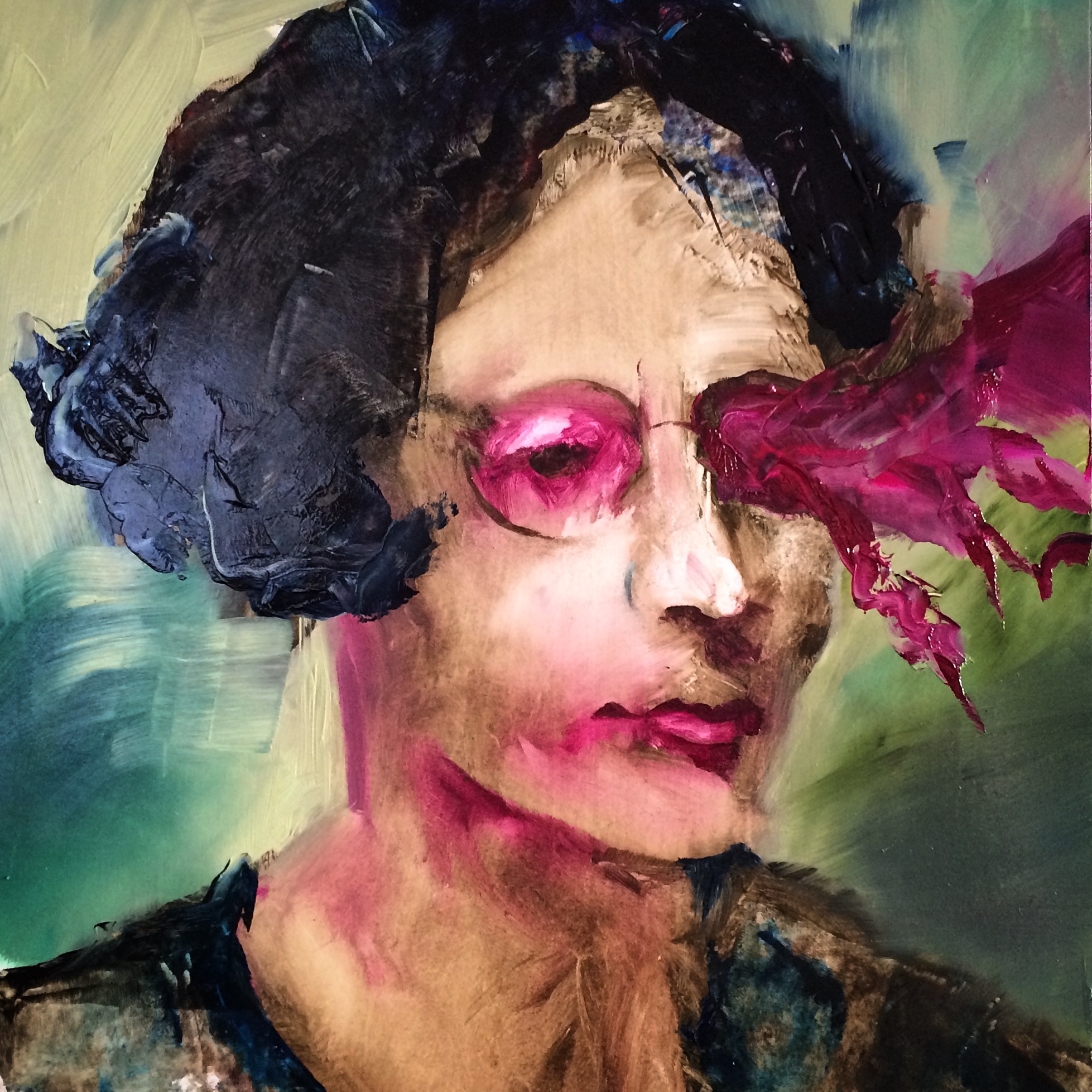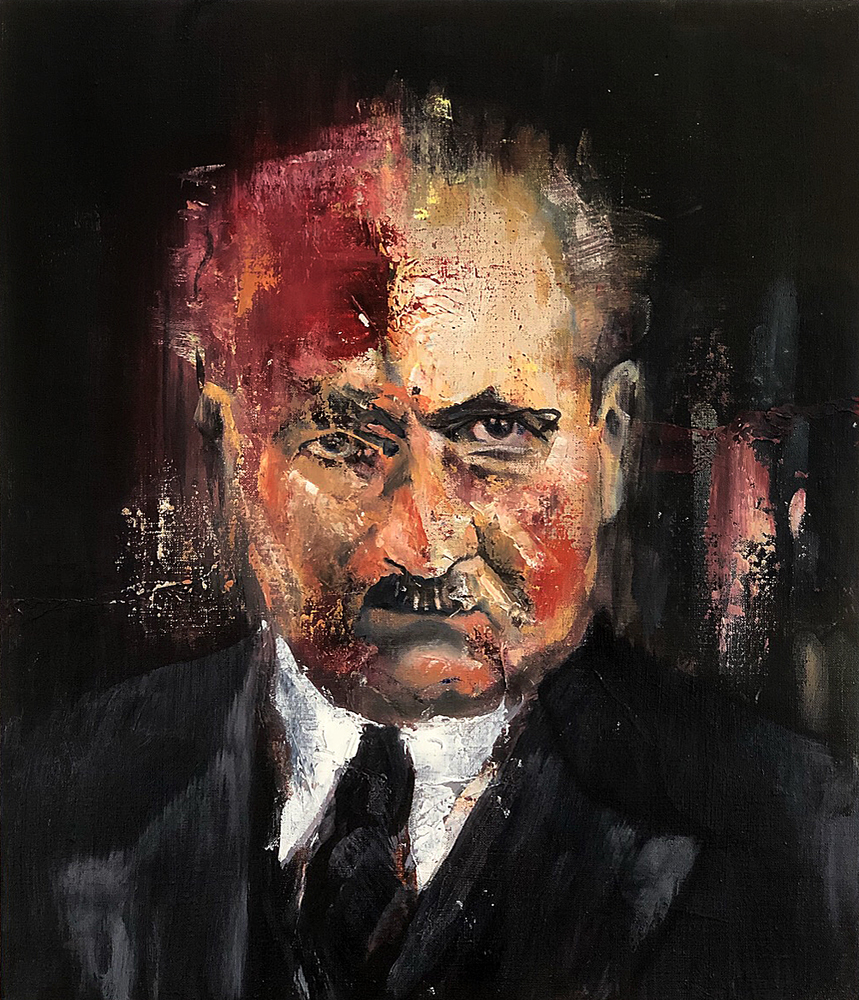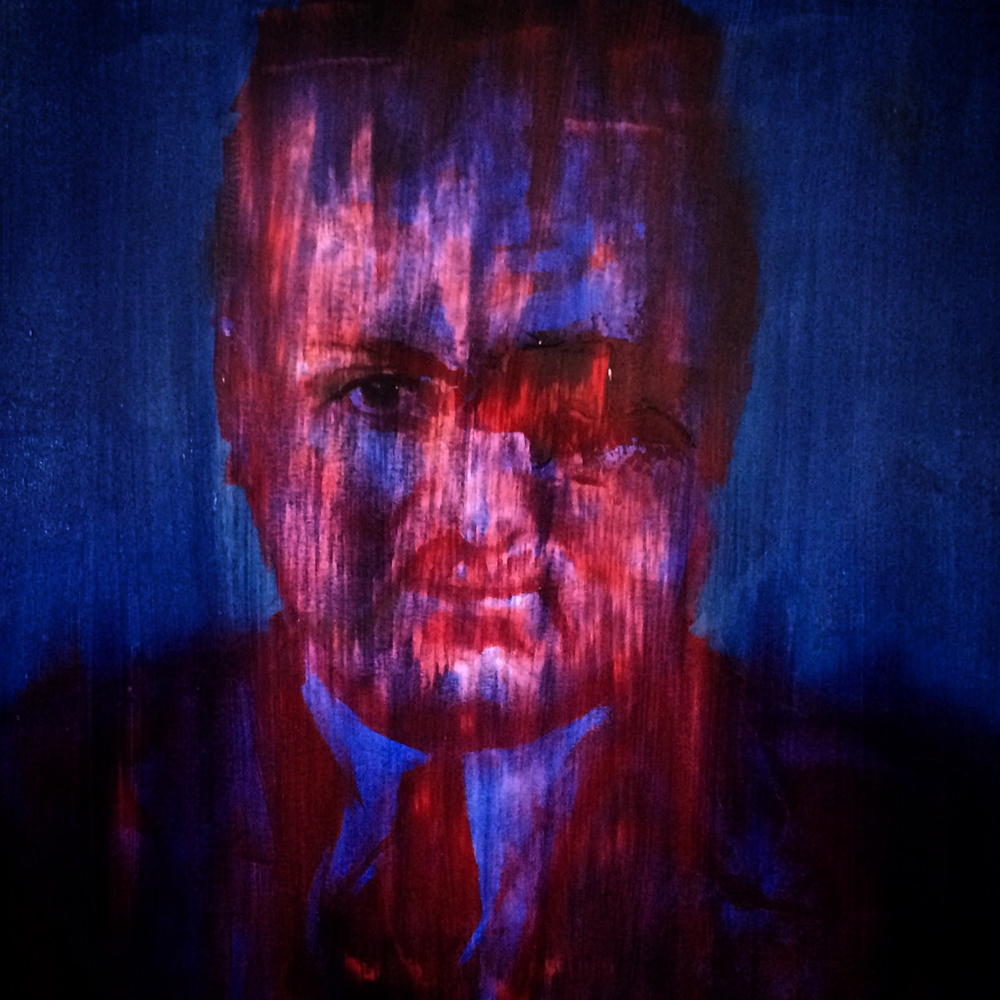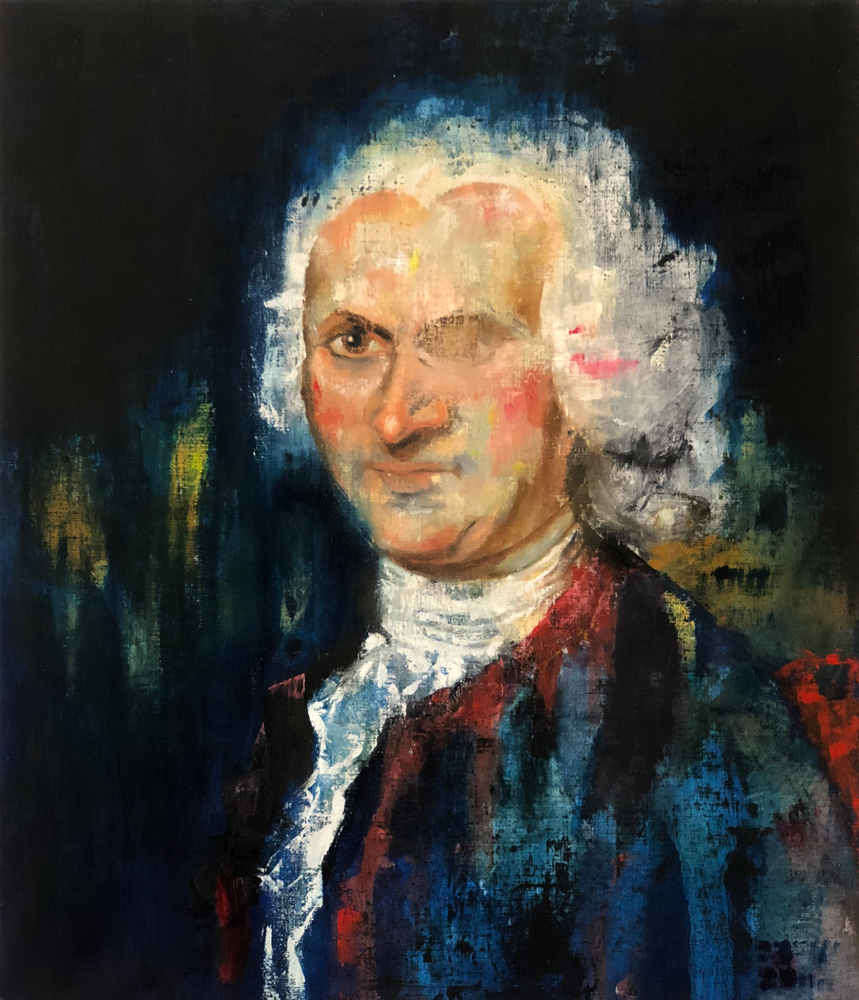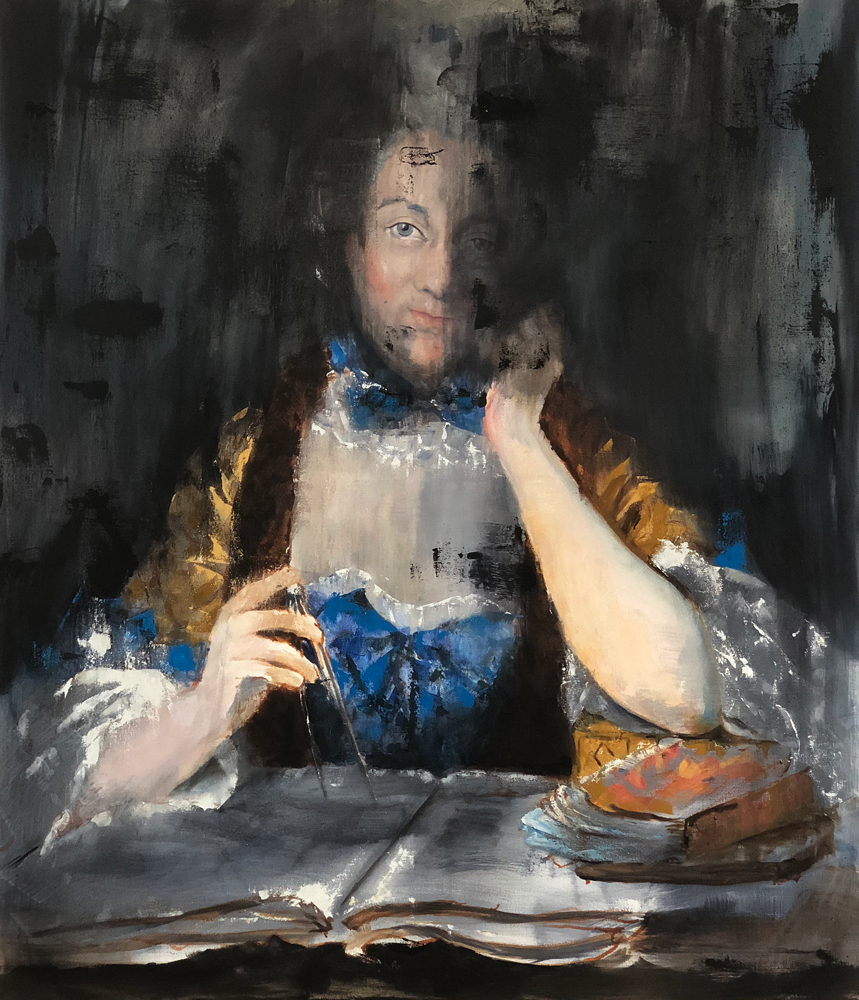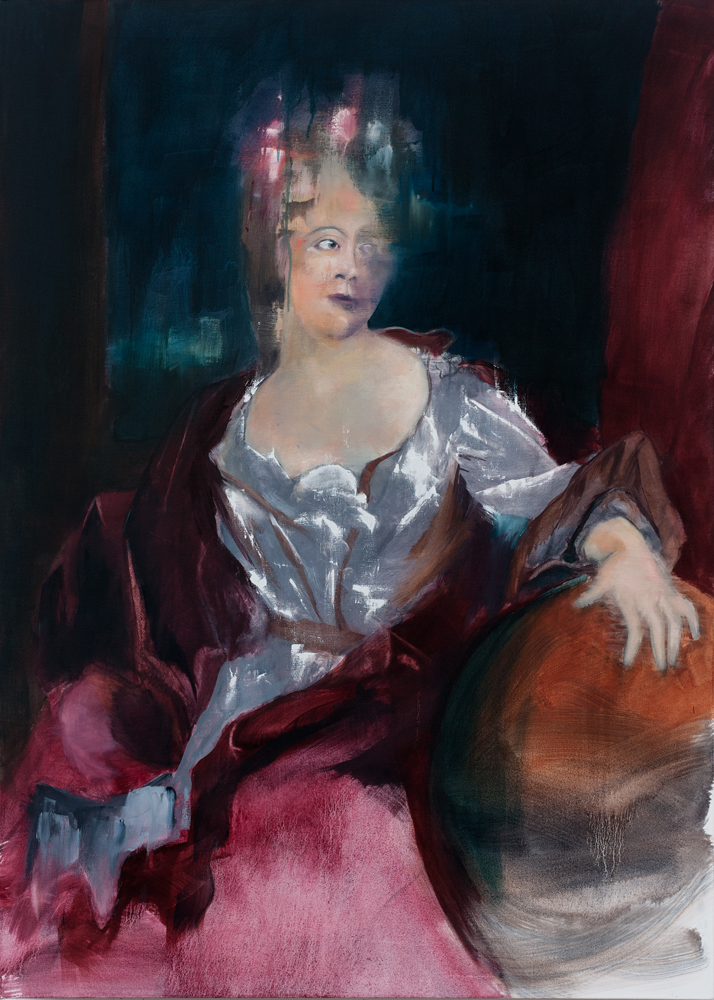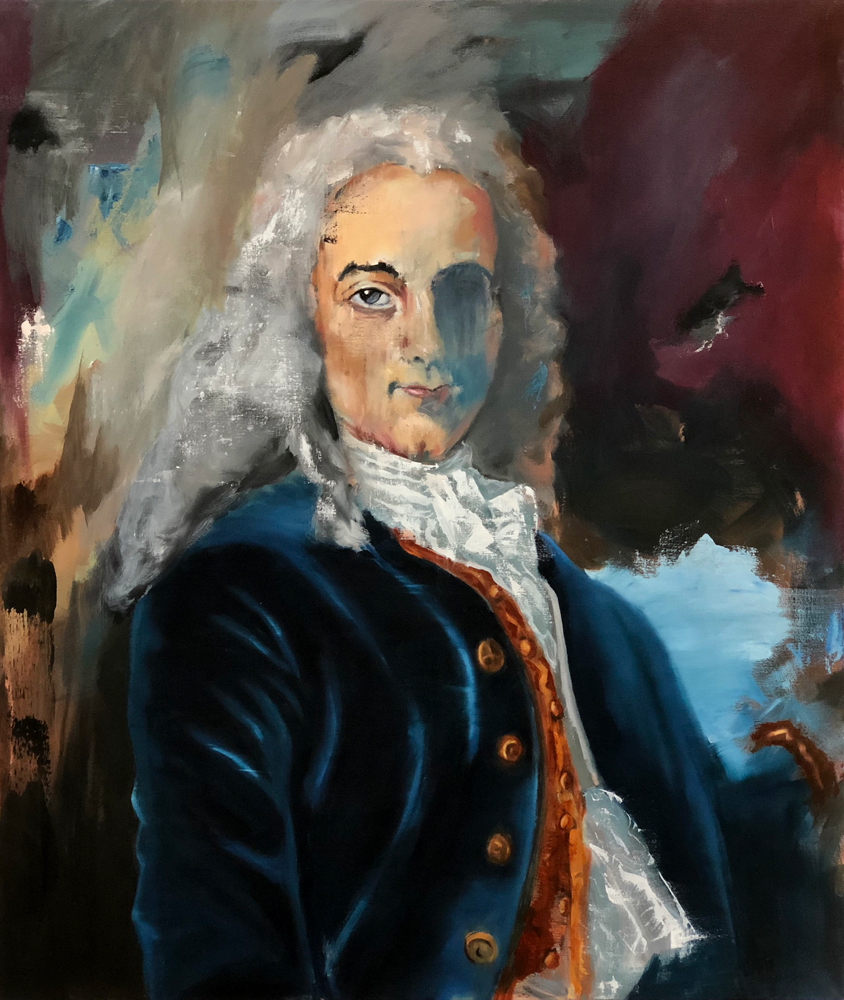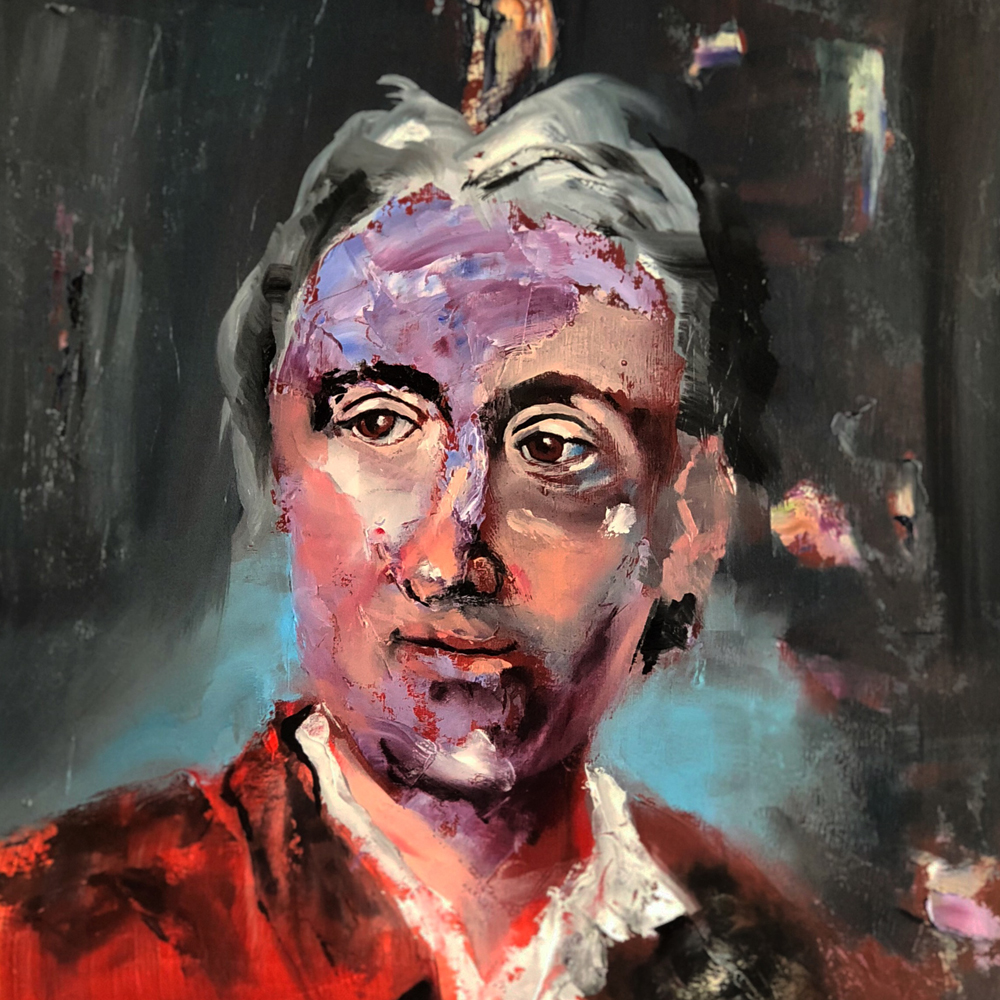“Art Raises is head when religions relax their hold”
Friedrich Wilhelm Nietzsche was a German philosopher, cultural critic, composer, poet, writer, and philologist whose work has exerted a profound influence on modern intellectual history. He began his career as a classical philologist before turning to philosophy. Nietzsche resigned his chair at the University of Basel in 1879 due to health problems that plagued him most of his life; he completed much of his core writing in the following decade.
Friedrich Nietzsche, 2018 Oil on Canvas 71x61cm (Available for Sale)
Nietzsche agreed with Schopenhauer that there is no God, and that we do not have immortal souls. He also agreed that this life of ours is a largely meaningless business of suffering and striving, driven along by an irrational force we can call will. Nietzsche rejected Schopenhauer’s conclusion that we should turn away in disgust from such a world, reject it, and withdraw from it. On the contrary, he believed that we should live our lives to the full in it, and get everything out of it. The central question posed by Nietzsche’s philosophy is how best to do this in a godless, meaningless world. In his 1883 book Thus Spoke Zarathustra (German: Also Sprach Zarathustra), Nietzsche has his character Zarathustra posit the Übermensch as a goal for humanity to set for itself. The Übermensch represents a shift from otherworldly Christian values and manifests the grounded human ideal. One of the words he uses most frequently is “dare”; and perhaps his first commandment is: “Dare to become what you are.”
In 1889, at age 44, he suffered a collapse and afterward a complete loss of his mental faculties, an illness almost certainly brought on by tertiary syphilis. He lived his remaining years in the care of his mother until her death in 1897 and then with his sister Elisabeth Förster-Nietzsche. Nietzsche died in 1900. In the late 19th and early 20th centuries Nietzsche exerted a widespread influence on creative artists, including playwrights August Strindberg and George Bernard Shaw, poets W. B. Yeats and Rainer Maria Rilke, composer Richard Strauss and novelists Thomas Mann and Hermann Hesse. His stoic heroism was a lasting influence on Albert Camus and Jean Paul-Sartre; the idea that we must confront the most difficult and unpalatable truths about ourselves without flinching, go on looking them in the eye, and live in the light of this knowledge without any reward other than the living of such a life for its own sake.








